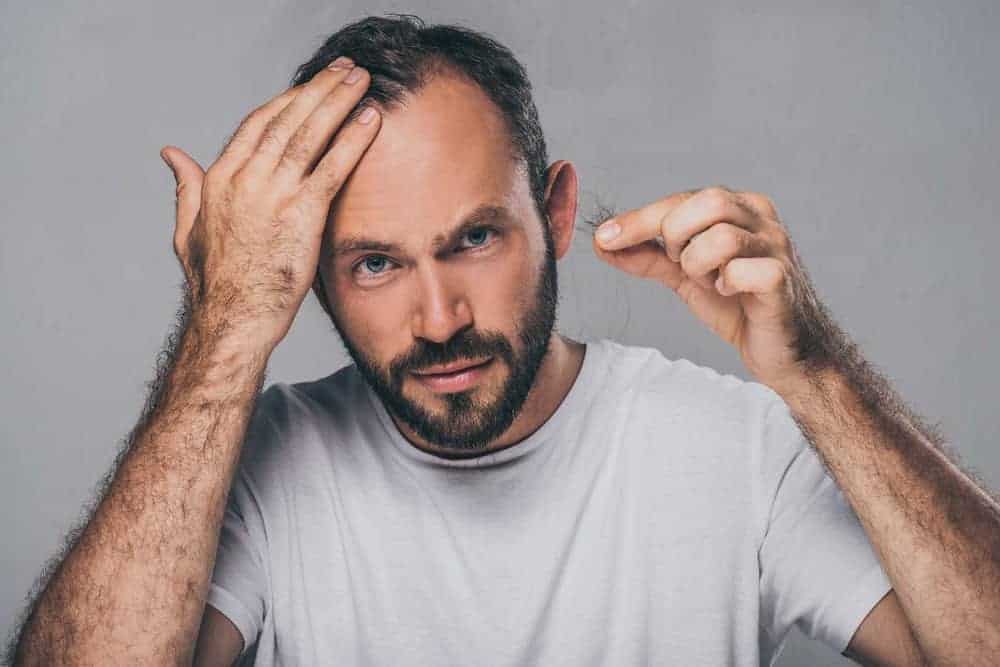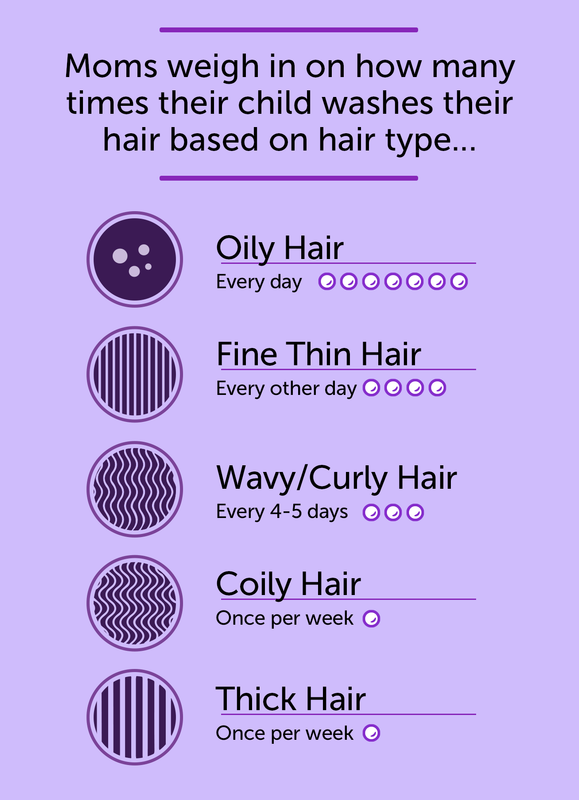The Truth About Hair Breakage and How to Stop It
Are you experiencing frustrating hair breakage? Do you dream of long, luscious locks but find yourself constantly battling split ends and snapping strands? You’re not alone. Many people struggle with hair breakage, and understanding its causes is the first step towards achieving healthier, stronger hair. At hairy.cartlab.web.id, we’re dedicated to helping you achieve your hair goals, and this comprehensive guide will equip you with the knowledge and strategies to combat breakage effectively. We’ll explore the underlying reasons behind hair breakage, offering practical solutions and preventative measures to help you grow the hair you’ve always wanted. This isn’t just about quick fixes; it’s about building a long-term hair care routine that prioritizes health and strength.
Hair breakage is a common concern that impacts people of all hair types and textures. It can be incredibly disheartening to see your hair falling out or breaking off, especially if you’ve been working hard to grow it long and healthy. Understanding the root causes of hair breakage is crucial to effectively addressing the problem and preventing further damage. This article will delve into the various factors contributing to hair breakage, providing you with actionable steps to improve the overall health and strength of your hair.
This guide aims to be your ultimate resource for understanding and overcoming hair breakage. We’ll cover everything from the subtle daily habits that contribute to damage to the more significant underlying health conditions that can impact hair strength. By the end of this article, you will have a comprehensive understanding of the truth about hair breakage and how to stop it, empowering you to make informed decisions about your hair care routine and achieve the healthy, vibrant hair you desire.

Understanding the Causes of Hair Breakage

Hair breakage isn’t a single problem; it’s often a symptom of multiple underlying issues. Understanding these causes is vital for effective treatment. The most common culprits include:
-
Physical Damage: This is arguably the most common cause. Rough handling (brushing too vigorously, tight hairstyles like braids or ponytails), heat styling (straighteners, curling irons, blow dryers), and chemical treatments (coloring, perms, relaxers) all weaken the hair shaft, leading to breakage. Excessive sun exposure can also contribute to dryness and brittleness.
-
Chemical Damage: Harsh chemicals in hair products can significantly weaken the hair. Sulfates, silicones, and parabens are common culprits found in many shampoos, conditioners, and styling products. These can strip the hair of its natural oils, leaving it dry, brittle, and prone to breakage. Over-processing with chemical treatments like coloring or perming can also cause significant damage.
-
Mechanical Damage: This refers to damage caused by friction, such as rubbing your hair against clothing or pillowcases. Sleeping on rough fabrics can lead to significant friction and breakage, especially for those with curly or textured hair.
-
Nutritional Deficiencies: A diet lacking essential nutrients like protein, iron, zinc, and biotin can lead to weak and brittle hair, making it more susceptible to breakage. These nutrients are vital for hair growth and overall health. Consider consulting a nutritionist or doctor if you suspect a deficiency.
The Role of Hair Products in Breakage

Not all hair products are created equal. Many commercially available products contain harsh chemicals that can strip your hair of its natural oils, leading to dryness, brittleness, and breakage. Understanding the ingredients in your hair products is crucial. Here’s what to look out for:
-
Sulfates: These are harsh detergents that can strip your hair of its natural oils, leading to dryness and breakage. Look for sulfate-free shampoos and conditioners.
-
Silicones: While silicones can make your hair feel smooth and shiny, they can build up on the hair shaft, weighing it down and potentially causing breakage. Use silicone-based products sparingly and choose products that are easily rinsed out.
-
Parabens: These preservatives are often found in hair products, but some individuals may experience sensitivities or allergic reactions. Opt for paraben-free products to minimize potential irritation.
Instead of products laden with harsh chemicals, choose those that are naturally-derived and focus on moisturizing and strengthening the hair. Consider using products specifically formulated for your hair type and concerns. For example, if you have curly hair, you may benefit from products designed to enhance hydration and reduce frizz. If you are dealing with significant breakage, consider seeking advice from a professional hairstylist. For tips on keeping your curls hydrated, check out our article on “How to Keep Curly Hair Hydrated All Day” at hairy.cartlab.web.id/how-to-keep-curly-hair-hydrated-all-day.
Protecting Your Hair from Damage

Preventing hair breakage is just as important as treating it. Here are some essential protective measures:
-
Gentle Handling: Be mindful of how you treat your hair. Avoid harsh brushing, especially when it’s wet. Use a wide-tooth comb to gently detangle your hair, starting from the ends and working your way up.
-
Limit Heat Styling: Excessive heat styling can severely damage your hair. Try to air dry your hair whenever possible. If you must use heat styling tools, use a heat protectant spray and keep the temperature as low as possible.
-
Protective Hairstyles: Avoid tight hairstyles that pull on your hair, such as tight braids, ponytails, or buns. Opt for looser styles that minimize tension on your scalp and hair follicles. If you’re unsure about which hairstyle is best for your hair type, you can explore stylish and voluminous options for short hair at hairy.cartlab.web.id/tips-to-style-short-hair-for-volume.
-
Regular Trims: Getting regular trims (every 6-8 weeks) helps remove split ends before they travel up the hair shaft, causing further breakage.
-
Sleep on a Satin Pillowcase: Switching to a satin or silk pillowcase reduces friction between your hair and the pillow, minimizing breakage and frizz.
-
Deep Conditioning Treatments: Regular deep conditioning treatments help replenish moisture and strengthen your hair, making it less prone to breakage.
Nutritional Strategies for Stronger Hair

Nourishing your body from the inside out is crucial for healthy hair growth. A balanced diet rich in essential nutrients is key to preventing hair breakage. Focus on incorporating these nutrients into your diet:
-
Protein: Protein is a fundamental building block of hair. Include lean meats, fish, eggs, beans, lentils, and nuts in your diet.
-
Iron: Iron deficiency can lead to hair loss and breakage. Good sources of iron include red meat, spinach, lentils, and beans.
-
Zinc: Zinc plays a vital role in hair growth and repair. Good sources include oysters, beef, pumpkin seeds, and chickpeas.
-
Biotin: Biotin is a B vitamin that’s essential for healthy hair growth. Good sources include eggs, sweet potatoes, and nuts.
-
Vitamin C: Vitamin C is an antioxidant that protects your hair from damage. Good sources include citrus fruits, berries, and bell peppers.
If you suspect a nutritional deficiency, consult a doctor or registered dietitian for personalized advice.
Addressing Underlying Medical Conditions

In some cases, hair breakage can be a symptom of an underlying medical condition. Conditions like thyroid disorders, hormonal imbalances, and autoimmune diseases can affect hair growth and strength. If you experience excessive hair breakage despite following a healthy hair care routine and diet, consult a doctor to rule out any underlying medical issues. They can perform necessary tests and recommend appropriate treatment. Remember, addressing the root cause is crucial for long-term hair health.
Conclusion:
Achieving healthy, strong hair requires a holistic approach. By understanding the truth about hair breakage and how to stop it, and by implementing the strategies outlined in this article, you can significantly reduce breakage and promote hair growth. Remember that consistency is key. Adopt a regular hair care routine that includes gentle handling, protective hairstyles, nourishing products, and a balanced diet. If you’re still struggling with hair breakage, don’t hesitate to seek professional advice from a dermatologist or trichologist. For further guidance on achieving your hair goals, visit The Truth About Hair Breakage and How to Stop It for more in-depth information and resources. Remember, healthy hair is achievable with the right knowledge and dedication. You deserve to have the strong, vibrant hair you’ve always dreamed of.






Comments